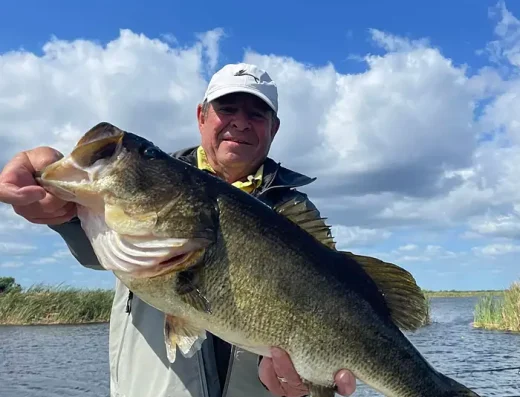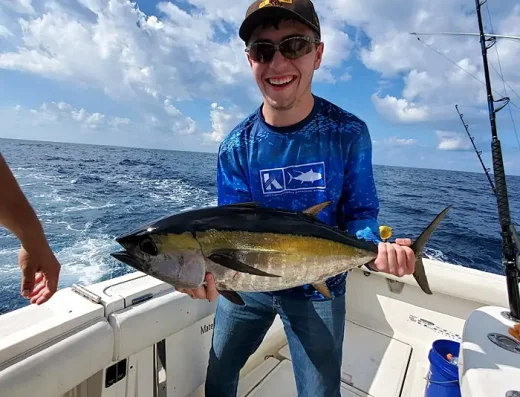Fort Pierce Fishing Charters
Fort Pierce fishing charters give anglers access to a year-round bite across the Indian River Lagoon, nearshore wrecks, and quick Atlantic runs for sailfish, snook, and snapper.
Top Rated Charters in Fort Pierce
TrustedFish connects anglers with proven local captains in Fort Pierce. Florida —no commissions, no pay-to-play listings, no BS. Every charter on our platform is invite-only, vetted for skill, local knowledge, and reputation. If they’re listed, they’ve earned it.
Fort Pierce, FL Fishing Guide
Fort Pierce sits on one of the most productive stretches of Florida’s east coast, with inshore, nearshore, and deep sea opportunities launching right out of the inlet. Most charters here are half-day or 6-hour trips, though full-day offshore runs are common during sailfish season or for deep-drop trips targeting snapper and grouper. Captains typically launch from the Fort Pierce City Marina or surrounding private docks along Seaway Drive, with quick access through the inlet and minimal idle time.
Inshore, the Indian River Lagoon winds through miles of flats, mangroves, and spoil islands, making it prime territory for snook, redfish, sea trout, and tarpon. Fort Pierce inshore fishing often involves sight-casting soft plastics, shrimp under popping corks, or freelining live bait near bridge pilings and oyster bars. The area around the North and South Bridges holds fish nearly year-round, especially on moving tides and moon cycles.
Just outside the inlet, nearshore reefs and wrecks in 30–100 feet of water offer reliable action for snapper, grouper, king mackerel, and cobia. Many of these spots are within 5–10 miles of shore, making them ideal for shorter trips or families. Slow-pitch jigs, live pilchards, or sardines on knocker rigs are go-to methods here.
For deep sea fishing, it’s about a 15–25 mile run to the edge of the Gulf Stream, where mahi, blackfin tuna, and wahoo roam, especially in spring and fall. Fort Pierce is especially known for its winter sailfish bite. Trolling ballyhoo or drifting live goggle-eyes along color changes and temperature breaks is the standard offshore play. Some days, blue water pushes in tight and the bite turns on just 10 miles out.
Fishing Seasons in Fort Pierce
Spring
Warmer water kicks off strong action across the board. Snook fire up inshore, sea trout stack along the flats, and cobia cruise the beaches. Offshore, mahi and blackfin tuna move through in good numbers. It’s a great season for mixed-bag trips close to the inlet
Summer
Snook spawn in the inlet, and the bite is hot around bridges, seawalls, and docks. Tarpon roll in the lagoon and along the beach. Offshore, kingfish and mahi remain active, while bottom fishing for snapper is steady on calm days.
Fall
Cooler mornings bring back the mullet run, igniting explosive nearshore and inshore bites. Tarpon, jacks, snook, and sharks follow the schools tight to the beach. Offshore, wahoo start showing up more consistently, and sailfish start making appearances ahead of winter.
Winter
Fort Pierce’s famed sailfish bite peaks as blue water pushes close. Expect fast-paced trolling and live-bait action offshore. Inshore, cooler water concentrates redfish and sea trout, and snook stay active around deeper structure. It’s a top time for both inshore and offshore charters.
Gamefish in Fort Pierce
- Snook – 5–20 lbs Caught year-round in the lagoon, inlet, and bridges. Live bait (pinfish, mullet) or artificials near structure.
- Tarpon – 40–100+ lbs Summer and fall around the beaches and inlet. Target with crabs, mullet, or live baits on circle hooks.
- Redfish – 4–12 lbs Found on flats and around mangroves. Sight-cast spoons, soft plastics, or soak cut bait.
- Spotted Sea Trout – 2–6 lbs Best in spring and fall. Topwaters and live shrimp along grassy flats and potholes.
- Sailfish – 30–60 lbs Peak in winter. Trolled ballyhoo or live bait along the edge of the Gulf Stream.
- Mahi-Mahi – 5–25 lbs Spring and summer offshore. Trolled lures or live baits near weedlines and color changes.
- Blackfin Tuna – 10–30 lbs Offshore spring and fall. Fast trolling or vertical jigging over deeper structure.
- King Mackerel – 10–30 lbs Nearshore reefs and wrecks year-round. Slow-trolled live baits or spoons.
- Mangrove Snapper – 2–8 lbs Inshore structure and nearshore reefs. Live shrimp or pilchards on knocker rigs.
Fort Pierce Fishing FAQs
Do I need a fishing license for Fort Pierce fishing charters?
No, anglers fishing on licensed Fort Pierce charters are covered under the captain’s license. You won’t need to buy anything extra.
What types of fishing trips are most common in Fort Pierce?
Half-day inshore or nearshore trips are popular, with some full-day offshore trips for tuna, mahi, and sailfish when the weather allows.
Where do most Fort Pierce fishing charters launch from?
Most charters leave from the Fort Pierce Inlet area, including the public marina and nearby private docks close to Seaway Drive
When is the best time to fish Fort Pierce for sailfish?
Winter is prime sailfish season, especially December through February when the blue water pushes in close to the inlet.
Is the Indian River Lagoon good for beginners or kids?
Yes, it’s protected from wind and offers steady action for species like sea trout, jacks, and snappers. Great for short trips
What gear should I bring on a Fort Pierce charter?
Most charters include all tackle, bait, and licenses. Just bring sunscreen, drinks, snacks, and a hat.
Can we keep the fish we catch?
Yes, within FWC limits. Many captains will clean your catch after the trip so you can take it home or to a local restaurant.
How far offshore do Fort Pierce deep sea trips go?
Offshore runs can be as short as 10 miles for sailfish and tuna, or 20–30 miles for mahi, wahoo, and deep-drop species.
What should I expect to catch on a nearshore trip in this area?
Nearshore trips often target kingfish, cobia, snapper, and Spanish mackerel—sometimes just a few miles out, especially in spring and fall.


